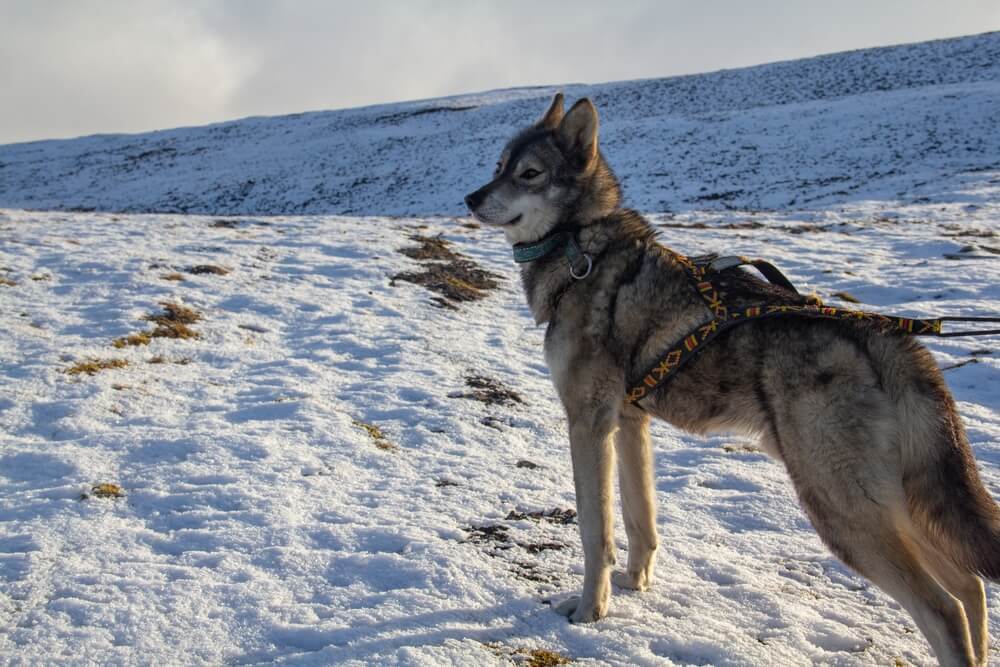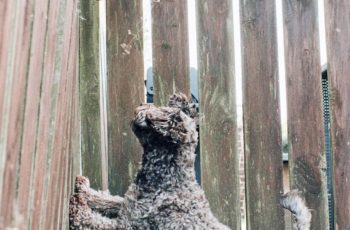Utonagan dogs and Tamaskan dogs both originated in the UK. For pet lovers who are looking for a highly intelligent and sociable dog with a unique “wolf-a-like” look – both breeds are great options to consider. Some things set these two breeds apart and that may make one a better fit in a family than the other.
Utonagan dogs are larger than Tamaskan dogs, but they tend to have the same weight and mass once fully matured. They also have comparable life spans and litter sizes which makes them comparable in that sense as well. For those who are looking for a low-maintenance dog breed, Tamaskan’s are going to be the best option. Utonagan dogs are also easy to care for, but they have a higher level of maintenance than Tamaskan’s.
Both breeds are striking in appearance and make great companions. If you are considering adding a new pet to your family and are not sure which to choose, our simple guide is a great place to start. We will go over the color, size, maintenance, and health differences between the breeds so that you can find a pet that fits your lifestyle perfectly.
What Does a Utonagan Dog Look Like?
A Utonagan Dog is an athletically built canine that closely resembles a wolf. This large dog is a mix of several breeds and was intentionally cross-bred to achieve its appearance.
The breed usually grows to 23 to 28 inches when fully grown. They usually max out at around 90 pounds and have a long pointed snout that is slightly blunted on the end. Their eyes have a pleasing almond shape with eye color ranging from brown to amber or yellow (preferred).
In rare cases, they’re born with blue eyes, but this trait is considered undesirable. Their double-dense coat tends to be white or off-white along with the bottom parts of their body while the top will range in color from grey to black.
What Does a Tamaskan Dog Look Like?

The Tamaskan Dog is an athletic-looking, wolf-like large sized dog breed. This working dog ranges between 24 inches and 28 inches when fully grown. It has a ‘pointed’ snout and a thick coat of fur.
Most Tamaskan’s are either black and grey or wolf colored and grey, but some may also have a red and grey fur. Their eyes are a deep amber and brown with a rare lightly colored yellow eye. Being that they are large dogs, it is common for their weight to fall between 50 and 100 pounds.
What is the Difference between a Utonagan and a Tamaskan Dog?
Visually both breeds resemble each other, however, it is easy to tell a Utonagan and a Tamaskan apart.
Utonagan dogs have a wider range of colors, hair lengths, and even eye color. They do look wolfish, but can easily be recognized as domesticated dogs.
Tamaskan dogs have a stricter breeding rule and as a result, they have a very specific look. They also resemble wolves much more accurately than Utonagoans. Tamaskan dogs all have a uniform look with a hide that, comes in only three color variations: black-grey, red-grey, or wolf grey.
|
Header |
||
|---|---|---|
|
Grey, silver, cream, brown, mottled. |
Black-gray, wolf-gray, and red-gray |
|
|
Cheerful, friendly, territorial, intelligent with no hint of aggression. |
Gentle, family- orientated |
|
Tamaskan vs Utonagan: Similarities and Differences
Although there are a lot of similarities between the breeds, some key differences also set them apart.
History
The Utonogan was developed in the 1980s by Edwina Harrison in the UK. This “wolf-a-like” dog breed is a mix of the Alaskan Malamute, the German Shepherd, and the Siberian Husky. The breed is very rare, and only a few breeders currently produce this particular line of dogs. These original dogs were known as the Harrison Wolfdogs.
The Tamaskan was bred around the same time in the 1980s to look as close as possible to a wolf while being domesticated. They are a crossbred dog breed, as such, are not recognized by major kennel clubs anywhere in the world.
Temperaments
Utonagan dogs are highly sociable dogs and built for travel. They love to spend time with their human and animal companions. They are alert, naturally wary of strangers but loyal and gentle with those in their household, including children and other pets. High ability for endurance and hard work.
Tamaskan’s are gentle dogs that get along with other dogs and also small children. They have a high level of intelligence and also do not do well when left alone for more than a short period of time.
Cost
Utonogan and Tamaskan breeds require a hefty investment.
Utonogan dogs pricing starts at $1,000 and can go as high as $1,600 for a single pup.
Tamaskan dogs pricing starts off at $1,200 and can go as high as $1,800.
Grooming
Both breeds have a moderate shedding pattern. They should be bathed and brushed on a regular basis to reduce dander and knotting in their hair. Neither breed is hypoallergenic and both lose their puppy coats between the ages of five and six months.
Tamaskan dogs are low-maintenance pets while Utonogan’s are considered moderate maintenance dogs.
Average Lifespan
Both breeds have similar life spans.
Specifically, the Utonogan has an average lifespan of 10 years to 15 years. The Tamaskan, on the other hand, has a general life span of 12 to 15 years on average.
Trainability
The Utonogan is generally easy to train and responds well to positive reinforcement. It is best to start their training as a puppy for best results.
The Tamaskan has a high level of intelligence which makes it very easy to train them. In addition to regular training, they tend to pick up tricks quite easily.
Exercise Needs
Both breeds are very active and need ample exercise in order to thrive. Plenty of off-leash running and long hikes are required, or at least a large yard to run around and play.
Behavior with Small Children and Other Pets
Both breeds are very social and will interact well with small children and other pets in the home. The best way to encourage sociability is by exposing them to a variety of people and animals when they are puppies.
Health Problems
Utonagans are generally healthy dogs with proper care and a balanced diet. That being said they are more prone to developing cancer as they age as well as hip and elbow dysplasia, degenerative myelopathy, epilepsy, bloat or gastric torsion, MRD (multifocal retinal dyslplasia).
Tamaskan dogs are very active and tend to stay healthy when cared for. They do not have any genetic illnesses, but as with most dogs, they are susceptible to parvovirus, hip dysplasia, skin infections, bloat, and cancer.
Diet
Tamaskan dogs require a diet that is high in protein and clean ingredients. Utonogan dogs require a diet that is high in vitamins and minerals, along with ample amounts of protein.
Home-cooked meals with fresh meat and vegetables are preferred for both breeds.
Should I Get a Utonagan Dog?
The Utonagan breed is highly intelligent and also very social. It is an active breed, so it is most suitable for families with room to play and plenty of time to spend with their dog.
They abhor being left alone for long periods and will fall into depression when neglected. If you have an active life or spend too much time away from home, this will not be a suitable breed.
Should I Get a Tamaskan Dog?
Tamaskan dogs have an aggressive look which is a stronger deterrent for intruders. Despite the look of this breed, it is a very social animal that enjoys spending time with its human family. They make great companions for children and are very gentle in nature.
They are an active breed, so it is important to have plenty of space for them to play as opposed to being confined indoors. Like most wolf breeds, they will experience separation anxiety when left alone. If you have the time to dedicate to this dog, it will make a good family pet, however, if you work long hours or spend a lot of time away from home, Tamaskan dogs are not going to be the best choice.
They are low maintenance, so as a first dog, it is a great choice.


